Introduction
We are, Angora, Zulu, Cassinova, and Kingsley. We are making an Ecobottle. Ecobottles are multi-environmental, closed habitats. They consist of 3 environments; terrestrial, decomposition, and aquatic. The terrestrial is soil with a type of plant or seed. The decomposition is ... well, decomposition. We put orange peels and an unknown type of seed in the decomposition. The aquatic contained water, sand, rocks, a water plant, and two male guppies. The point of the ecobottles was to see what happens in a closed environment; to see if organisms would be able to survive in a closed, previously uninhabited environment. If you are interested in learning a thing or two about this project, read on.
Procedure
We learned how to construct an eco-bottle from Eco-Assembly Guide. You can find a link to that document at the bottom of the page.

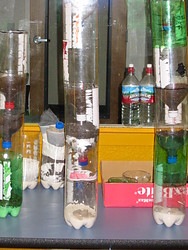
Our ecobottle on September 23, 2005 © 2005
What you'll need:
- 4 or 5 2-liter bottles
- duct tape
- sand
- compost
- soil
- water
- seeds of some kind of plant (green beans, basil, etc.)
- living organisms (fish, scorpion, crickets, snails, etc.)
- and lots of hard work and dedication
Hypothesis
In the beginning, our group started out with terrestrial, decomposition, and aquatic chambers. There were two guppies and a plant in the aquatic chamber, a bean plant in the terrestrial chamber, and orange peels in the decomposition chamber.
We think that the guppies and plants will live a long time and be healthy.
Observations
(Mostly Zulu's observations)
9/29/05:
White mold in decomposition. The bug has gone missing. Bottle is still getting humid. I planted two green bean seeds and a unknown tree seed. We have a guppy now, but there is still no food for the poor thing. Watering the seeds made the aquatic place get all weird with dirty-ish water. We have yet to seal things.
9/30/05:
Terrestrial: Watered about a tablespoon worth of water. Plants still need to grow. Watered about a tablespoon worth of water. I put in three orange peels in. The mold is still white and spiderweb looking. The bug must have died sometime last night or this morning.Aquatic: Another guppy has been added. The two fish are strangely hanging out at the top, dead center. It's kinda scary. They are still alive too. Decomp:
10/4/05:
Terrestrial: First plant has grown. It looks like a bean plant. The other two seeds haven't grown yet. Decomp: Oranges shrank? Creepy... The white mold is spreading more now, but not on the peels. The whole bottle has gotten so humid you can barely see what's going on inside. Aquatic: Both fish have died. The skin off one of them fell off. It's very gross! The seaweed stuff hasn't changed, it's just sitting there.
10/11/05:
Terrestrial: Very wet and humid, beans thriving with strong roots. Decomp: orange peels moldy with white fuzz, white mold over entire decomposition - damp. Aquatic: water's murky, both fish dead and moldy.
Our ecobottle is slowly getting grosser. The fish are dead and decomposing. The water is green. The decomposition is moldy and fuzzy. The only pretty thing that is alive and thriving is the beans. The beans are doing excellent, but part of the plant starting to die.
10/21/05:
Terrestrial: I think the plants are dying because the leaves are starting to get yellow. A leaf fell to the bottom and it's rotting there. Decomp: Ugly, Ugly, Ugly. A lot of green ugly mold. It's shocking that the peels have gotten so small since I put them in. All so scary.Aquatic: Mold and air bubbles are growing/getting trapped under the sand. How interesting. The piece of dying seaweed is becoming black and zombie like. It's blocking the view kinda. The fish are becoming zombies.
10/27/05:
Terrestrial: The beans are getting really yellow now. The roots look fine; though I don't know if you can tell plant health by the roots in the first place. There are only three green leaves left.Decomp: The orange peels are brown and again, a lot smaller. Aquatic: The seaweed is ALIVE!! Bubbles are coming out from the steam and leaves. A teacher from another class, and a fellow student saw something in it that was very small, clear, and swimming at a good pace. I have yet to see it. BLAH to that.
10-28-05 12:50pm:
Terrestrial: Plant doing very well, starting to grow out of bottle. Part of leaves on plant dying and you can see the roots of the bean. Decomp: Damp, Moldy, and orange peels look like pieces of cardboard. Aquatic: Very green and gross, lots of algae settling on bottom. Sand is getting very moldy. Part of plant dying, other part living.
Date Unknown - After 10/28/05:
Terrestrial: The plant has forced itself out the ecobottle. Awesomeness! More awesomeness, the beans have discovered their OWN way of living without us.. even though it's half dead already. The heat in the bottle causes humidity, which cause water to form on the insides of the bottle. Therefore, watering the plant on it's own! Decomp: The oranges are disappearing now as the mold eats away at it. It looks as though someone knocked the bottle over. Mushy looking things, or mold, are kinda missing. Probably from someone KNOCKING it OVER and not telling me. You know who you are, you person you!Aquatic: Dead as of now, that I can see.
Date Unknown (After previous entry):
Terrestrial: Dead, dead dead. A waste land it has become.. Decomp: Nothing new. Aquatic: Death, life. Both so cold in their little home. Growing in fear, dares the ones that live. HA!
Analysis and Discussion
At first our hypothesis about the guppies was that they were going to live a long time. Time after time they looked healthy as could be. But, in reality, the guppies died. The orange peels became taken over by mold and shriveled up and rotted into the soil, never really to be seen again. Then things went pretty smooth for a while and I, Kingsley, thought that the bean plant was beautiful and doing great. The plant was green and flourishing. I thought the bean plant would live throughout the whole duration of the project. Next the plant started growing yellow and brown leaves. Next it started to shrivel up. The plant eventually died. Everything that we guessed would live eventually died. The aquatic chamber also became very mucky and teemed with larvae and water fleas.
Our answer to all of our failed hypothesis was that the mold from the decomposition chamber spread to the aquatic and terrestrial chambers, killing the things that couldn't survive when surrounded by mold. The mold was a dead giveaway in the terrestrial chamber because of all the condensation that was occurring. It was a humid place, which is a good environment for mold to live in. We believe that the mold was transferred to the other chambers through the bean plant and the aquatic plant. The bean plants roots, we believe, grew to touch the decomposition chamber, making it easy for the mold to transfer to the terrestrial chamber. The aquatic plant, we believe, grew up to touch the decomposition level, also making it easy for mold to be transferred.
About two weeks before the end of the ecobottle observation period, we spotted some unusual activity in our aquatic section. We took a little water and placed it on a microscope slide and looked at what was living in the aquatic section of our bottle. This is what we saw:
Looking on the Tree of Life website, we found that what we were looking at were water fleas, and most likely water flea larvae. We don't know how they got in our bottle, but it was interesting to find them there!
To compare our ecobottle to the other ecobottles in our class, two of us drew Venn Diagrams, shown below:
Conclusion
We learned a lot from this project. We learned that not only do you have to know how to do this, you have to want to do this. If we were to do this project again, there are definitely some things we would change. First, we would put rocks in the aquatic, not sand. Secondly, we wouldn't put stuff that can mold in the decomposition. That was a bad idea because the mold transferred to the water and killed the plant that the fish ate, therefore killing the fish. It also got onto the once-thriving bean plant, making it shrivel up. We think the mold got onto the straw that had access to all the chambers.
Some questions we have are:
- How did the larvae and water fleas get inside a closed environment?
- What kind of mold was it that killed everything?
I, Cassinova, learned a lot from this project. First, I learned the obvious: how to build and maintain a closed environment. Secondly, I learned how much work and effort this took. You have to have a passion for this kind of work to really get what you're doing and want to do this. I also learned a lot about habitats and the different kind of environments they help create. This project was a great learning experience that required a lot of work, but it was worth it. This is Kingsley, Cassinova, and Zulu saying adios.
Link to the PDF of the Eco-Column Assembly Guide:  View EcoColumnAssemblyGuide.pdf
View EcoColumnAssemblyGuide.pdf
Information on the Internet
- Annenberg Media: Bottle Biology The Bottle Biology site is a great place to learn about how to make ecocolumns.
- Wisconsin Fast Plants The Fast Plants site provides a wealth of information on how to use special types of plants for ecobottle investigations.


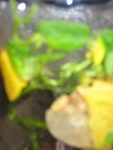

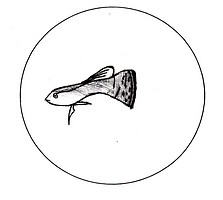
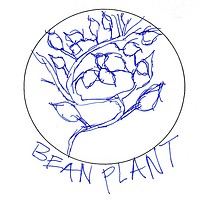

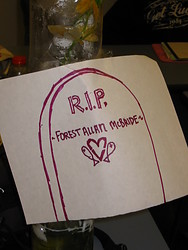
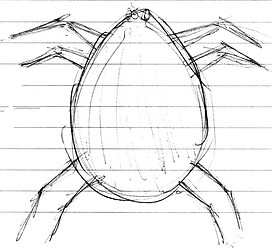
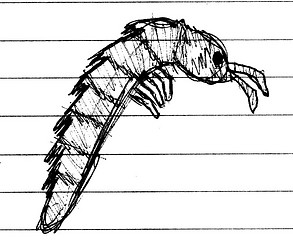

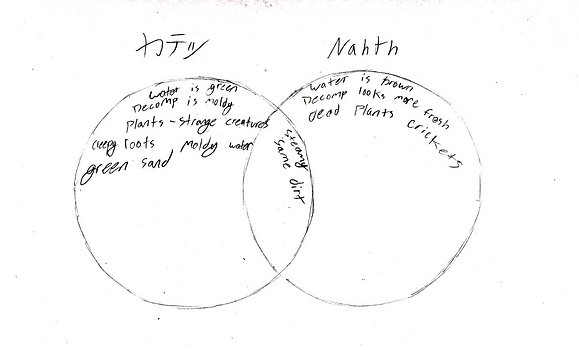

 Go to quick links
Go to quick search
Go to navigation for this section of the ToL site
Go to detailed links for the ToL site
Go to quick links
Go to quick search
Go to navigation for this section of the ToL site
Go to detailed links for the ToL site